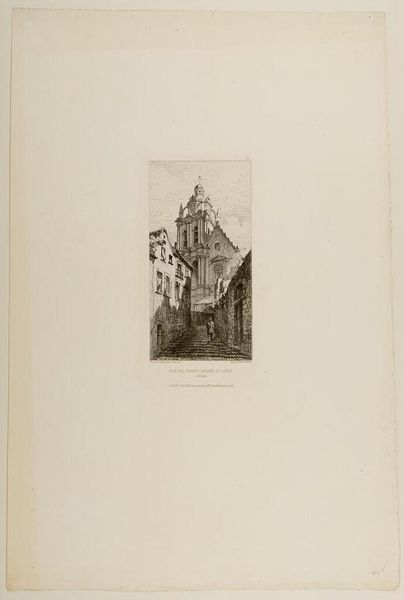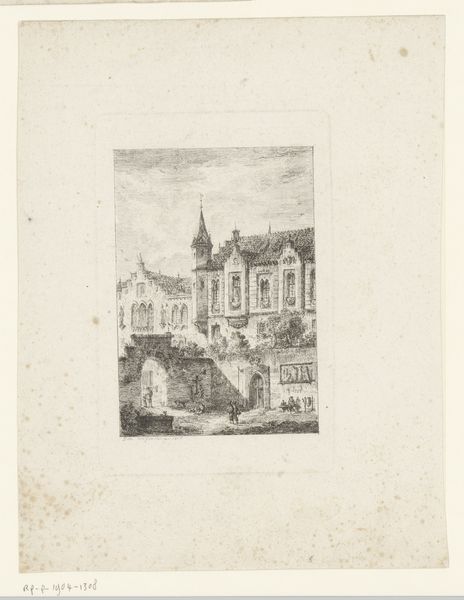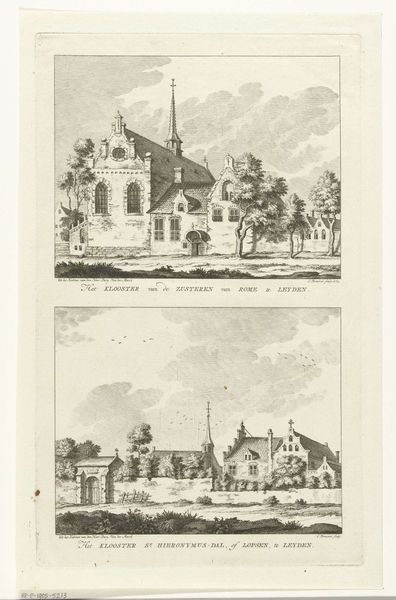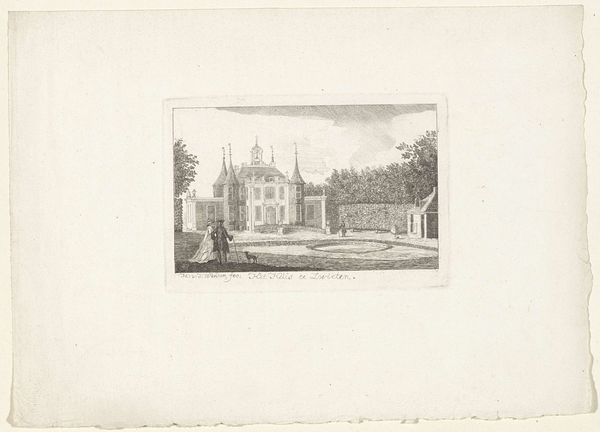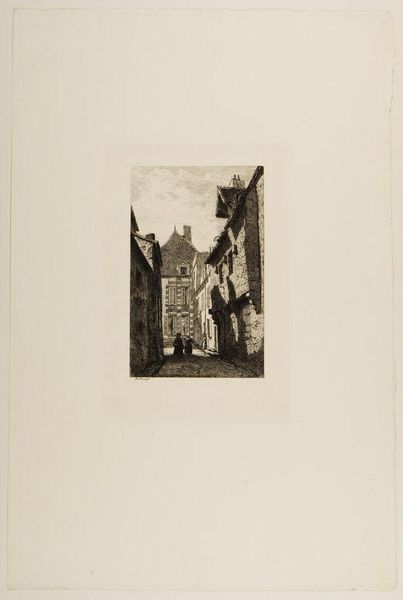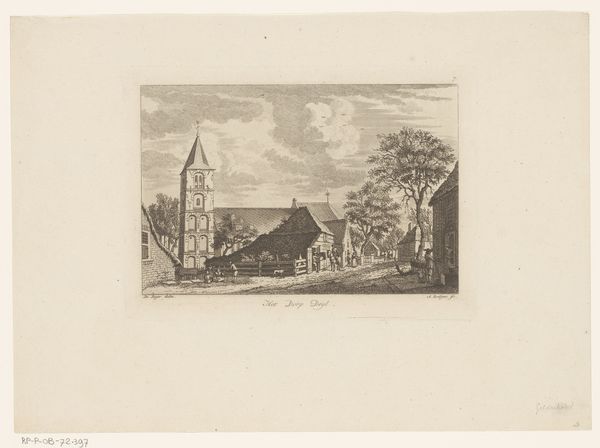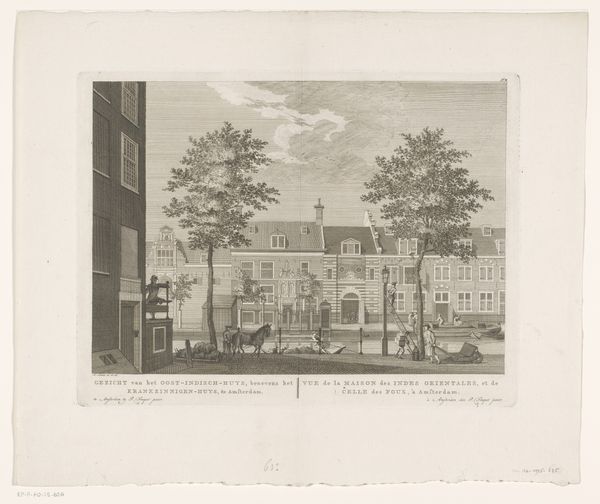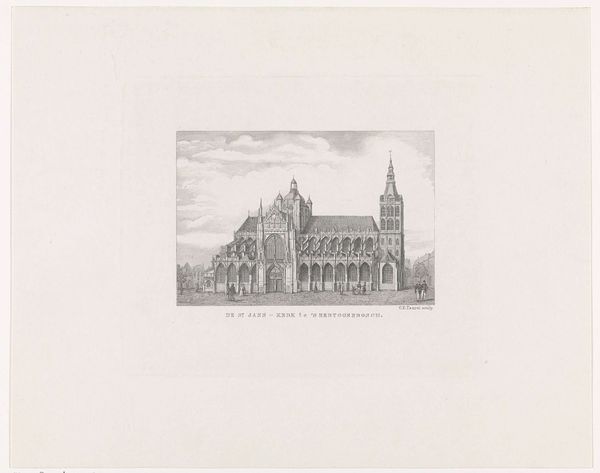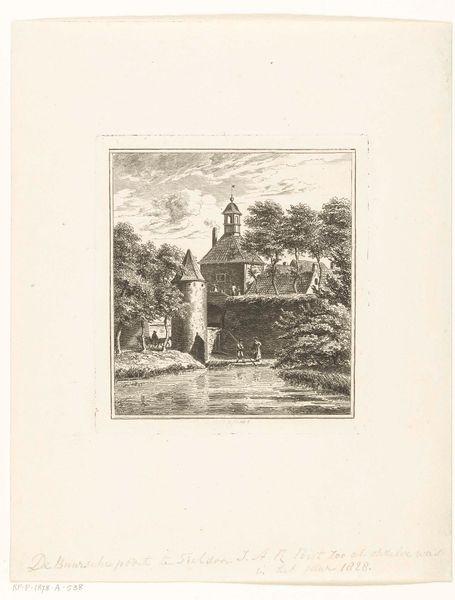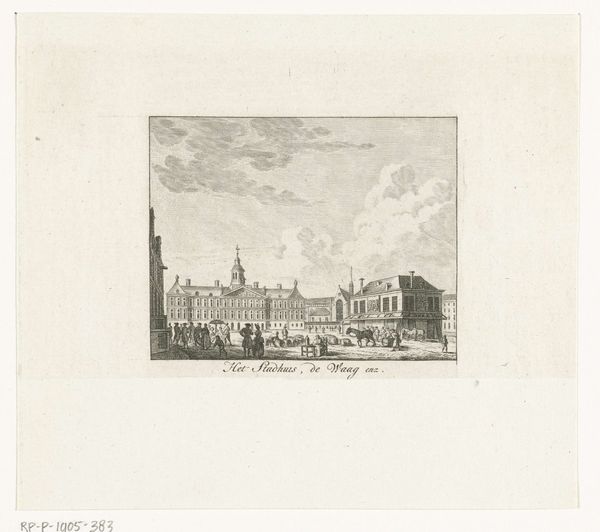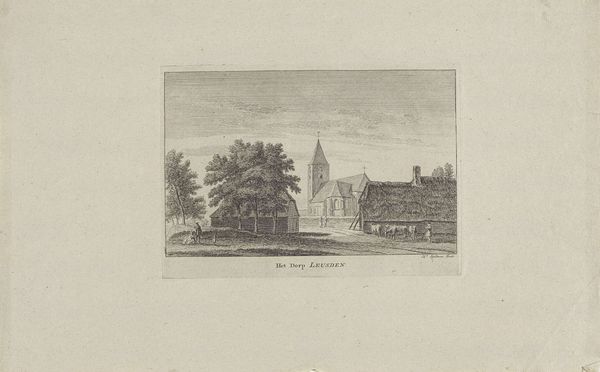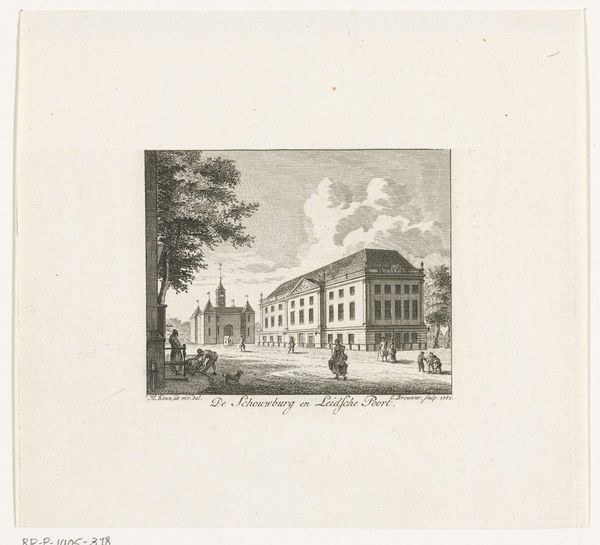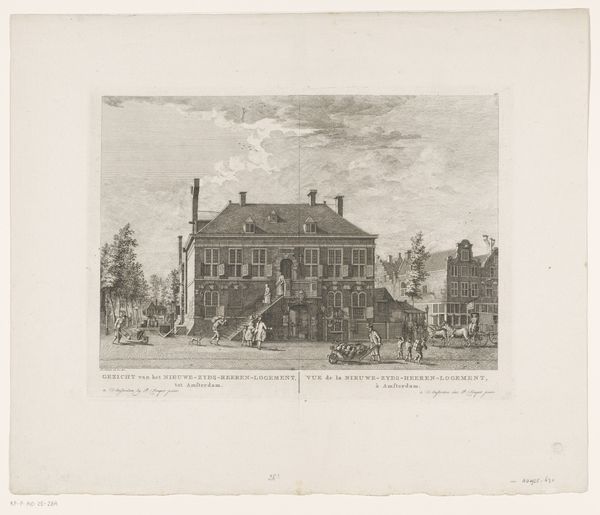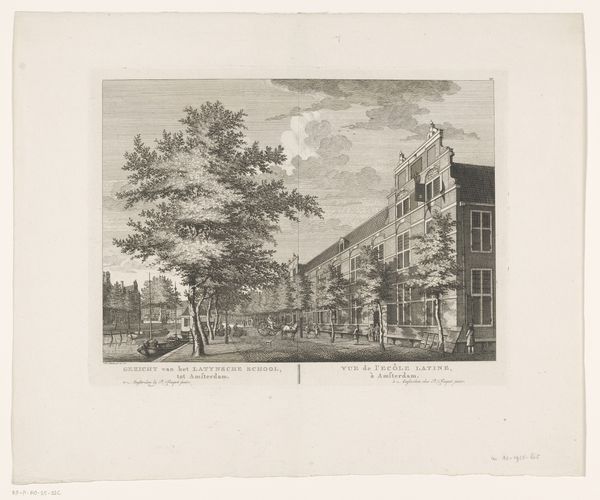
Gezicht op de Nederduitse Academie van Samuel Coster aan de Keizersgracht, 1617 c. 1752 - 1789
0:00
0:00
casparjacobszphilips
Rijksmuseum
Dimensions: height 158 mm, width 220 mm
Copyright: Rijks Museum: Open Domain
Curator: Here we have an engraving from the late 18th century, sometime between 1752 and 1789. It’s a rendering of the Nederduitse Academie—Samuel Coster's Dutch Academy—as it stood on the Keizersgracht in 1617. Caspar Jacobsz Philips is the artist. Editor: It’s such a calm, orderly image, almost… sterile. It doesn't convey the hustle and bustle I imagine was happening on the canal. What stands out is the Academy building, looming there. Its dark triangular shape appears so dominant and monolithic. Curator: I’m fascinated by the emphasis on perspective, pulling us in and simultaneously guiding our attention. Notice the careful placement of the trees flanking the structure? They almost act as symbolic guardians, framing this nascent space for intellectual and artistic pursuit. This echoes a humanist emphasis on rational order and harmony, rendered visible to the common eye. Editor: I appreciate that, but also find it disconcerting. The Academy was revolutionary—it was offering education in the vernacular, Dutch, rather than Latin, and that democratizing aspect feels flattened here. Is there a bit of sanitized history being sold? What wasn't depicted, whose stories are left out of this perfectly linear rendering? The women playwrights whose works would later grace the stage... Curator: Yes, there is definitely a story behind what’s highlighted, but this bird’s eye perspective allows us to see that it held a prominent position on the Keizersgracht—the academy was staking its ground. Symbolically, it announces its existence among the canal houses. The choice to include boats full of onlookers enhances a sense of place and immediacy to those looking back on the past. Editor: Right, the boats show that the space was active, inhabited. They add some necessary dynamism to a potentially static composition. It’s not just a pretty building; it was a living, breathing intellectual hub and their inclusion acknowledges that a public attended it. Curator: In all, it serves as an intriguing visual marker, highlighting how cultural institutions are framed, literally and figuratively, for posterity. Editor: A starting point for richer inquiry. Thanks for guiding me.
Comments
No comments
Be the first to comment and join the conversation on the ultimate creative platform.
